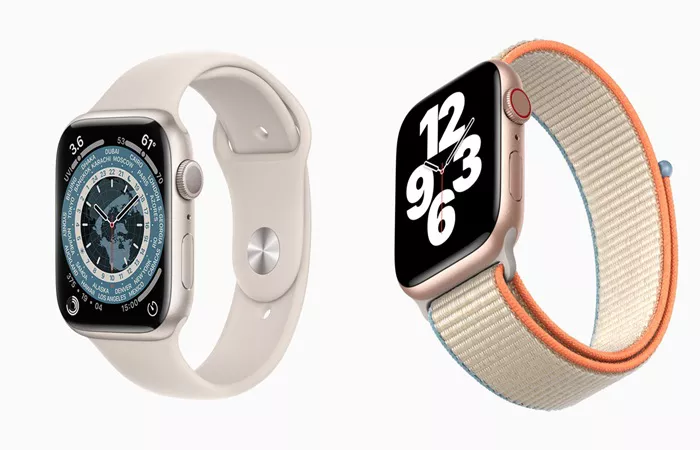The Apple Watch has long been an underrated contender in the realm of running watches, despite its flaws. As someone who has owned nearly every iteration of the Series lineup—though not the Ultra, given my smaller wrists—I’ve spent years assessing its evolution. Having previously reviewed the Series 4 and Series 5, I can confidently say the Series 10 represents Apple’s most refined, enjoyable, and user-friendly running watch to date.
Yet, in many ways, it isn’t drastically different from the Series 5, which introduced the Always-On display, a game-changer in functionality. The latest enhancements—faster charging, a slimmer design, and a brighter display—elevate its appeal, making it an excellent option for runners. Having tested competing AMOLED-equipped models, I find Apple’s execution superior in several aspects.
Design Enhancements
Avoiding a spec-heavy breakdown, I want to focus on two key design improvements that enhance the user experience.
First, the slimmer profile—9.7mm thick, 10% thinner than its predecessor—may seem like a minor change, but it’s noticeably sleeker. While the previous model never felt bulky, the streamlined design makes it easier to wear under layers, particularly for runners pulling sleeves over their watches.
However, Apple’s trend of increasing watch size remains a concern. The smallest option, now 42mm, still fits my wrist, but I question the gradual upsizing. Smaller-wristed users deserve consideration, too.
Second, an unexpected yet practical feature: the ability to play music and podcasts through the watch’s speaker. Initially, I dismissed this as unnecessary, but during early morning suburban runs, I found it useful. The volume isn’t sufficient to overpower city noise, but in quieter environments, it eliminates the need for Bluetooth headphones.
Bonus point: Apple’s commitment to backward compatibility means that original Apple Watch bands still fit the Series 10—an appreciated continuity.
Fast Charging: Eliminating Battery Concerns
Apple’s fast charging transforms battery management. Running approximately 70 miles per week, I use the watch with GPS and LTE enabled but without streaming music. A one-hour run depletes 10–15% of battery, or up to 20% under heavier usage. Despite this, charging speed negates concerns.
My routine: I wake up at 4:30 a.m., place the watch on the charger while having coffee, and within 20 minutes, it reaches 80%. By the time I’m ready to run, battery levels are more than sufficient. Another 15–30 minutes of charging in the evening keeps it powered for the next day.
While extended trips without a charger remain impractical, for daily use, battery life is a non-issue.
Performance for Runners
The Apple Watch Series 10 delivers impressive GPS accuracy, even without dual-band capabilities. Comparing routes recorded by the Apple Watch and the Coros Pace 3, discrepancies remain within 1%—a strong performance for urban and suburban runners.
Heart rate tracking is similarly precise but depends on band selection and fit. Unlike Garmin and Coros, where stock bands are the norm, Apple Watch users frequently swap bands. A poor fit can impact readings. The Sport Band provides reliable results, whereas looser options, like leather bands, introduce inconsistencies. The solution? Ensure a snug fit.
Button Limitations and Workarounds
Compared to Garmin and Coros, the Apple Watch’s lack of physical buttons can be a disadvantage. While not a dealbreaker, workarounds are necessary.
For runs with frequent stoplights, enabling auto-pause works well, or runners can manually pause workouts by pressing both buttons simultaneously. However, manually taking splits presents a challenge. Apple assigns a double-tap gesture to mark splits, but executing this during an intense sprint is unreliable. To resolve this, third-party apps like Stryd (for footpod users) or WorkOutdoors (for general use) allow reassignment of the two-button press for easier split tracking.
Superior Display
The display is brighter and sharper than before. The 42mm model boasts a resolution of 374 x 446 pixels—an improvement from the Series 9’s 352 x 430 pixels. The increased screen area enhances readability, particularly in low-light conditions.
Compared to memory-in-pixel (MIP) screens found on the Coros Pace and Garmin 245/255, or AMOLED displays on the Garmin 265/965, the Apple Watch offers superior legibility during runs. While MIP screens excel in bright sunlight, they require backlight activation in dim settings. AMOLED screens, meanwhile, suffer from unreliable wrist-flick detection and suboptimal viewing angles. The Apple Watch, in contrast, remains visible even at lower brightness levels.
Additionally, syncing with Strava, once requiring third-party workarounds, is now seamless.
Final Verdict
Despite its limitations, the Apple Watch Series 10 proves to be a highly capable running companion. I relied on it during my recent marathon PR (2:20:41 at Houston) and throughout much of my training.
Is it flawless? No. For structured workouts requiring intricate lap tracking, I still turn to my Coros. But for easy runs, long runs, and tempo sessions, I reach for the Apple Watch without hesitation.
The debate over Apple Watch’s viability as a serious running tool persists. While not without compromise, Apple’s advancements in sports tracking are significant. Dismissing it outright ignores its strengths.
As for me, I’ll continue wearing the Series 10—unless Apple decides to release an Ultra Mini. Then we’ll talk.
Related Topics:
How To Reset Password Apple Watch

